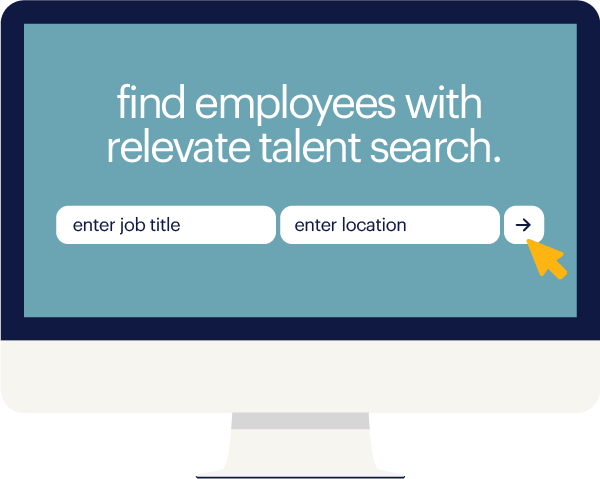Looking to hire a compensation and benefits manager for your organization? You're in luck. Burning Glass, a labor-insights provider, reports that demand for these positions is low, with only about 12,000 jobs posted in the last year and an average of 40 days to fill an open position. So how do you trim down that time-to-fill metric and find a best-fit candidate to bring on board?
Here are our top tips for finding and hiring the best compensation and benefits manager:
1. make your hiring process seamlessReady to get started? Read on for ways to make these tips a part of your recruitment process.
1. speed up your hiring process
If you need to fill a role immediately, looking ahead at a long, arduous hiring process can be overwhelming. And on top of that, a lengthy hiring timeline can be damaging to employee morale, as other team members continue to shoulder a heavier workload until the role is filled. The following diagram can help identify ways to make your recruiting timeline as streamlined as possible.
2. develop a competitive compensation package
In order to attract the top talent for any role, you need to offer a competitive salary package. This is even more vital when you're hiring for a compensation and benefits manager — whose primary job it is to know what makes for a competitive offer!
If you're unsure of the standard today, be sure to look at Randstad's salary guide while doing your research to access the most up-to-date national averages for the role.
However, since salaries can vary greatly depending on your location, put our salary calculator to use to find the most accurate information for your markets.
3. identify the top skills for compensation and benefits managers
Once you've gotten past compensation, it's important to decide which skills are absolutely necessary for the candidate to be successful. Talk to hiring managers and people who work closely with the open role — such as your HR director and recruitment team — and come to a conclusion everyone is comfortable with. Since the role of a compensation and benefits manager can vary from company to company, it's also important to agree on the amount of freedom the person will have when determining your organization's compensation levels.
consider the amount of freedom the role will have when strategizing your company's compensation program.
Keep your list of skills (both the "must-haves" and the "nice-to-haves") handy for when you are writing the job description. To get you started, here are the common skills required of compensation and benefits managers:
budgeting
project management
human resource information system (HRIS)
benefits administration / management
generally accepted accounting principles (GAAP)
customer service
staff management
customer billing
4. write an eye-catching job description
Crafting a job description that is equal parts engaging and informative can be a challenge. Here are three things to keep in mind when you're completing the write-up.
don't write like a robot
Leave the jargon behind, especially when describing the job. Instead, write how you talk, or how you would describe the position and company to someone in person. This will go a long way in helping potential candidates understand what the role and organization are all about.
Use the job description to talk about what makes the role special and the opportunities for growth. A compensation and benefits manager position has the ability to be really creative in terms of what types of packages, incentives and commission models are offered, so be sure to explain that in an easy-to-understand way. Plus, include a bit about the team and company culture so the reader has an accurate idea of what working there would be like.
be sure your job description speaks to what makes the role special and the opportunities for growth available.
show how this job is meaningful
Today's job seekers want their work to have a greater meaning, so be sure to speak to the role's value and rewards in the job posting. Answer questions like: How does the role impact the greater organization? What makes the role important? Is there a distinct company or team culture?
For example, knowing what the company culture and team structure are like is important for potential candidates in this role, so they can better understand the type of compensation they need to be familiar with. By anticipating these questions, you'll help job seekers visualize what it's like to come to work every day.
make it easy to skim
Avid job seekers are likely reading multiple listings a day, so make sure yours is to the point and easy to read. Instead of including long paragraphs that are visually intimidating, try shorter paragraphs and use bullet points where applicable.
This way, a potential candidate can quickly pull out important words and phrases that will give them an idea of what they need to succeed in the role. It may look something like this for a compensation and benefits manager:
- Keep abreast of changes to state and federal laws to guarantee our pay and benefits packages are compliant.
- Support acquisition and retention of top talent by analyzing both current and future compensation packages to ensure competitive offerings.
5. brush up on the latest industry trends
The human resources industry as a whole is poised to have massive growth, and compensation and benefits manager roles will likely follow suit. To stay competitive in the market, you'll need to keep these latest trends at the forefront during your recruitment:
-
Employment opportunities for compensation and benefits managers are predicted to grow three percent by 2029.
-
Because competitive compensation packages will be used as a key recruiting tool, compensation and benefits managers will be heavily relied upon as the industry expands.
demand for compensation and benefits managers will start growing — about three percent by 2029.
6. choose your channels to find candidates
To attract the most qualified compensation and benefits manager candidates, consider working with a staffing firm that is well versed in the HR space. These firms give you access to a large pool of vetted, qualified talent that are actively seeking new opportunities, as well as those hard-to-find passive candidates.
Get in touch with the human resources experts at Randstad for help in finding top-notch compensation and benefits managers. Or take a look at our Find Your Employee portal, were screened and vetted candidates are waiting to hear from you.








